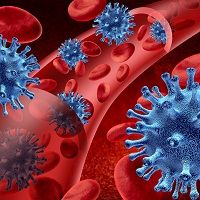Article
New Insight into How HIV Avoids Immune System Responses During Initial Stage
Author(s):
How does the human immunodeficiency virus (HIV) escape the immune system's antiviral responses during the initial stage of infection? Canadian researchers may have the answer.

How does the human immunodeficiency virus (HIV) escape the immune system’s antiviral responses during the initial stage of infection? Canadian researchers may have the answer.
During the acute infection stage of HIV, the virus establishes in cellular reservoirs and predicts the disease progression and severity. Lead investigator Eric A. Cohen, PhD, and colleagues from ICRM found that the viral protein, Vpu, helps the virus dodge the body’s natural first line of defense. The discovery, published in PLOS Pathogens, could lead to innovative treatments and possibly a cure.
“An important component in this process is a group of proteins collectively called type 1 Interferons, which are the immune system’s first line of defense against viral infections and are known to have a beneficial role in the early stages of HIV infections,”Cohen, a virologist and director of the Human Retrovirology research unit at the IRCM, said in a news release.
The Interferons are produced by immune cells, plasmacytoid dendritic cells (pDCs), and activate when a pathogen is present. The pDCs continue by alerting more defense mechanisms in order to prevent the virus from spreading.
“When pDCs encounter HIV-infected cells, the production of Interferon is regulated by a protein located on the infected cell’s surface called BST2,” said first author Mariana Bego, PhD.
However, BST2 can bind to a receptor on the surface of pDCs, called ILT7, and when activated it inhibits the Interferon responses — which limits the body’s defensive antiviral activity and allows the virus to spread.
”Interestingly, BST2 is also responsible for restricting HIV production by trapping the virus at the cell surface before it can exit infected cells and disseminate,” Bego explained. “However, HIV uses the viral protein Vpu to counteract BST2 antiviral activity.”
The crucial finding that Vpu uses the relationship between BST2 and ILT7 to promote the virus’ progression can help lead to improved treatments.
“The hope for a definitive cure and an effective vaccine has been frustrated by HIV’s endless propensity to subvert the host’s defenses and persist in small populations of long-lasting reservoirs despite antiretroviral therapy,” Cohen said.
Therefore, the researchers concluded that developing a strategy to interfere during the initial infection stage to enhance antiviral responses will help prevent the progression of HIV.





